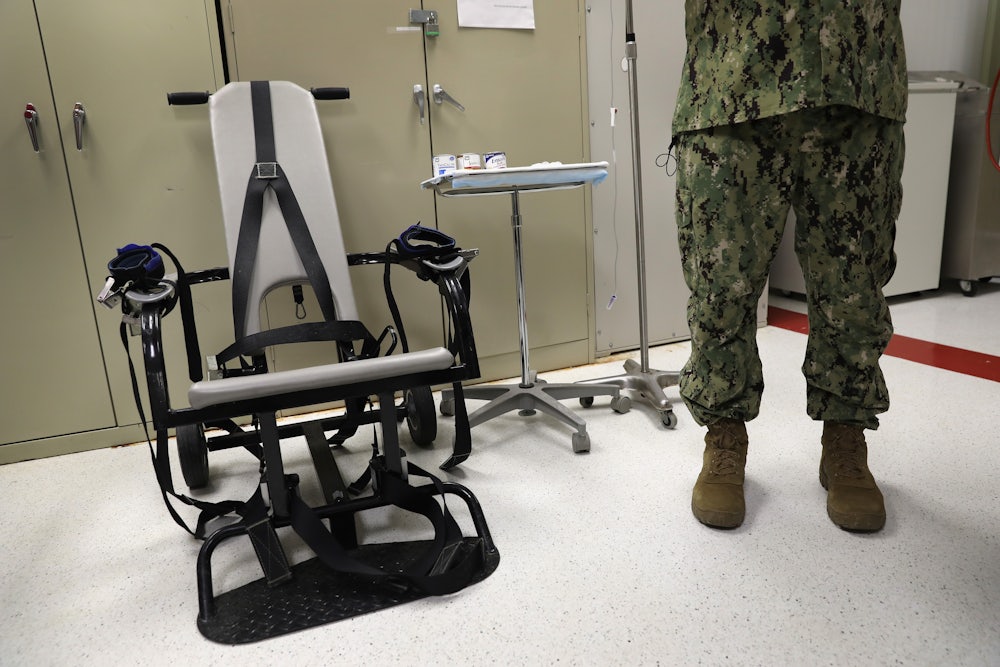On November 20, 2008, sitting in my cell in Guantanamo, I swallowed food for the first time since 2006. It was a celebration of sorts. Earlier that day, my friends and I had listened to Judge Richard Leon announce his decision in our case, Boumediene v. Bush. It had taken nearly seven years and a successful appeal to the United States Supreme Court to compel the judge to review our case, but once he did, it only took a matter of days for him to realize there was no case against us. When he ordered our release, I was so relieved, so overcome with emotion, so excited to be reunited with my wife and children, that I don’t even remember what I ate.
The next morning, I resumed my hunger strike.
“Next time I eat,” I told the guards, “it will be in my own home, from the hand of my wife.”
Another 181 days passed before I was actually released. With the exception of my one celebratory meal, I had eaten nothing but what was force-fed to me through a tube. I emerged from Guantanamo at 5’9” weighing 125 pounds. When my older daughter first saw me, I was so wasted away she didn’t recognize me. “This man,” she told my wife, “is too old to be my father.”
I am sometimes asked why I went on a hunger strike. Did you want to die? Had you given up? The answer is no. Even in the darkest moments of my seven years in Guantanamo, I never let go of the hope that I would one day see my wife and daughters again.
I stopped eating not because I wanted to die, but because I could not keep living without doing something to protest the injustice of my treatment. They could lock me up for no reason and with no chance to argue my innocence. They could torture me, deprive me of sleep, put me in an isolation cell, control every single aspect of my life. But they couldn’t make me swallow their food. And I knew they wouldn’t let a detainee starve to death.
That, however, may no longer be the case. According to The Guardian and other news outlets, hunger-striking detainees have not been fed in the last month. “I am slowly slipping away,” Khalid Qasim told his attorney, “and no one notices.”
To be honest, I’m torn about whether hunger-strikers should be force-fed. On the one hand, force-feeding is a form of torture. You’re strapped into a six-point restraint chair—we even called it the “torture chair”—and a lengthy tube is jammed into your nose and snaked down your throat. You feel as though you are choking, being strangled, and yet somehow still able to breathe. It’s an excruciating, impossible-to-describe feeling that I wouldn’t wish on anyone.
At the same time, it is also torture to force a man to choose between giving up his only means of protest and giving up his life.
Remarkably, when faced with two inhumane options, the American government seems to have chosen both of them. The human rights organization Reprieve reports that “instead of force feeding them in the painful way previously done, Guantanamo medical staff have adopted a strategy of allowing the men to starve; denying them basic medical checks until their organs begin to fail and they become seriously ill; whereupon, when they are half dead, they will be kept half alive in forever-detention without trial.”
If true, this is a particularly cruel, sadistic approach. At the very least, if the American government is going to torture detainees by force-feeding them, it should return to the old policy of doing so before they starve half to death.
Better yet, the American government should stop denying Guantanamo detainees their basic legal and human rights. Detainees would not have to hunger strike in the first place if they received timely, fair trials and humane treatment. They demand justice for themselves in the only way they can because the rest of the world does not demand it for them. They are slipping away because no one notices. As a recent article about Guantanamo concludes, “Innocent, guilty, or somewhere in between, every human deserves to be treated as one.”
